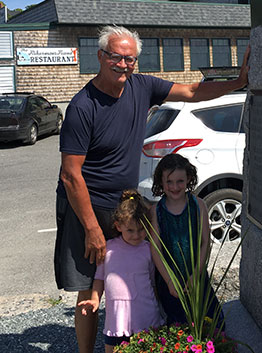Hopefully, the Ukrainian people and army will repel this invasion and the Russian people – as many are wont to do – will continue their struggle to stop the war and retire, asap, the Putin regime. If that is the case, I assume that democratic, progressive, and socialist minded people worldside will – with tactics in mind – do whatever they can to express their solidarity for people in both countries in their conjoined struggles. We would look worse than silly if we stood on the sidelines and looked on indifferently.
This article by Bill Fletcher and Carl Davidson is full of timely analysis and information. Well worth reading!!! Not everyone will agree, but I believe it is spot on!
Maureen Dowd is on the top of her game here. She concludes with an observation that is logical and hopefully obvious to millions.
Children and their parents, young and old people, soldiers and civilians – Ukrainians – are dying every day at the hands of a superior Russian army that invaded their country on the order of its dictatorial president. But apparently this is of little concern to John Wojcik, the editor of the People’s World.
What concentrates his mind and is accorded top billing on the PW’s website yesterday was his story of a leader of the right wing Ukrainian Azov battalion who is hunted down and killed by Russian soldiers. The next story on the site, written by the same writer, tells readers of NATO’s weaponry dangerously falling into the hands of right wing Ukrainians. If these two articles were outliers it would be one thing, but they aren’t. They are consistent with the PW’s approach to this horrendous invasion and crisis.
I can’t imagine another editor (or editorial board) of the PW in recent decades – and I knew all of them – covering the war on Ukraine and its people in such a manner – so one sidedly, so trapped in old assumptions and realities, and, above all, so indifferent to the death of Ukrainians and the violation of their sovereignty by a much bigger, more powerful, and imperialist minded neighboring country.
It’s shameful!
I watched UCONN women and NC State women clash in Elite 8 game last night with UConn women winning in double overtime. I have to say, having watched lots of March Madness, that this was the best game with no close competitor. It wasn’t just the two overtime that made it a “game for the ages.” It was the outrageously great quality of play on both sides down the stretch and then in the two overtimes. Contested basket after contested basket on both sides, nothwithstanding immense pressure – defensive and psychological – on the players of both teams. And while everyone brought their A game, Paige Bueckers, Connecticut’s heralded sophmore guard, took her game to a new level in the final minutes of regular time and then in the two overtimes.
So glad I watched this superb and unforgettable game. As is sometimes said, you hate to see either team lose.



